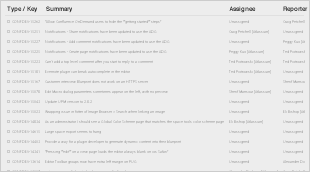The National Great Rivers Research and Education Center (NGRREC) is a partnership of Lewis and Clark Community College and the University of Illinois at Urbana-Champaign.
Phase 1 was the initial collaborative effort that presents historical and real time data with real time reporting and visualization of nitrate data within a cyber-infrastructure framework. Focusing on nitrates as a proof of concept, Phase 1 prioritized extant reliable knowledge; facilitated collaborations and data sharing; and enabled automated data extraction interfaces with highly visual decision support tools. It also incorporated Great Rivers Ecological Observatory Network (GREON) data into the GeoDashboard (an NCSA developed geospatial dashboard for geo-temporal data streams).
Phase 2 identified data gaps and the need for additional data collection activities (use cases), and upgraded the user interface based on input from scientists and managers. This involved a more rigorous assessment of water quantity and quality issues at the watershed scale; incorporated nutrients beyond nitrates; prioritized data gathering and reliable knowledge about the data needed to optimize large scale conservation programs; facilitated collaborations and data sharing; revised the user interface; and built on/enhanced Phase I automated data extraction interfaces with highly visual decision support tools.
Phase 3 brought further enhancements of the data platform to archive, explore, search, visualize and download data obtained from various data sources and formats and upgraded data ingesting and user interface visualizations. We added historical nitrate and other nutrient data over a greater expanse of the Mississippi River Watershed, and added/enhanced real time nitrate data from the GREON buoys and USGS monitors as they become available.
To date, the Great Lakes to the Gulf Virtual Observatory has emphasized the identification and integration of water quality data pertaining to the Mississippi River. While the data related aspects of GLTG merit continued work, we are now setting the stage to create value streams for GLTG along the continuum:
These capabilities are essential to improve policies and practices that affect the river.
In phase 4, NCSA will focus on transforming data to knowledge in GLTG by developing decision support capabilities that state and federal agencies can ultimately use to grow public support and build capacity to advance nutrient loss reduction (NLRS) strategies.
NCSA will harvest and ingest the data (at least 6 new sources) from various sources identified by LC-NGRREC. It will require NCSA to develop additional parsers for these various sources and configure the GLTG with proper metadata and information.

NCSA will integrate at least 3 additional contextual data (geospatial layers) to the platform. This requires NCSA to manipulate the identified geospatial data, upload it to Geoserver and integrate it to GLTG.

NCSA will deploy another instance of GLTG for State of Illinois. The site development will be done In cooperation with NGRREC and IEPA. It will be used for the Illinois Nutrient Reduction Strategy Plan.

GeoDashboard v3 is an ongoing development effort with two other projects: IML-CZO and Great Lakes Monitoring.
NCSA and NGRREC will gather, identify, and prioritize additional user requirements along with lessons learned from the current GLTG site.

NCSA will implement/test/deploy GeoDashbarod v3 for GLTG based on the user requirements. During the development process, the testing will be done via NCSA and NGRREC.

NCSA will replace the current search page with v3 first. Then, NCSA will gradually upgrade other components of GLTG to GeoDashboard v3

NCSA will develop a repository (or exploratory analysis) page for computation models (tools) for water quality interpretation (i.e. SPARROW, SWAT, etc.). The site will allow users to test the models with the water quality data from GLTG.

LC- NGRREC and NCSA will gather/survey the models/tools which could be possible for GLTG to host. Example data and executions will be collected for GLTG to test.

NCSA will develop/test the platform for models/tools by using NCSA DataWolf, a scientific workflow engine.
